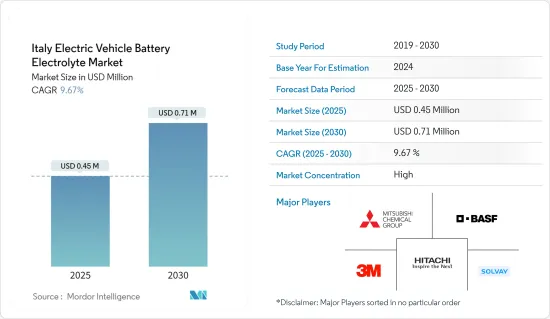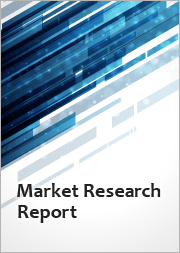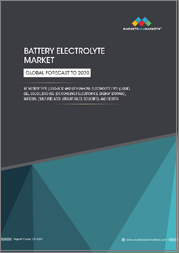
|
시장보고서
상품코드
1636509
이탈리아의 전기자동차 전지 전해액 : 시장 점유율 분석, 산업 동향, 성장 예측(2025-2030년)Italy Electric Vehicle Battery Electrolyte - Market Share Analysis, Industry Trends & Statistics, Growth Forecasts (2025 - 2030) |
||||||
■ 보고서에 따라 최신 정보로 업데이트하여 보내드립니다. 배송일정은 문의해 주시기 바랍니다.
이탈리아 전기자동차 전지 전해액 시장 규모는 2025년에 45만 달러로 추정되며, 예측 기간(2025-2030년)의 CAGR은 9.67%로, 2030년에는 71만 달러에 달할 것으로 예측됩니다.

주요 하이라이트
- 중기적으로는 전기자동차(EV) 수요 증가나 정부의 지원책 등의 요인이 예측 기간 중 시장을 견인할 것으로 예상됩니다.
- 반면에 공급망 문제는 예측 기간 동안 시장 성장을 방해할 것으로 예상됩니다.
- 전해질 재료의 혁신은 앞으로 몇 년동안 시장에 큰 기회를 가져올 것으로 기대하고 있습니다.
이탈리아 전기자동차 전지 전해질 시장 동향
전기자동차(EV) 수요 증가가 시장을 견인
- 이탈리아의 전기자동차(EV) 시장은 활황을 보이고 있으며, 전지 전해액 수요를 끌어올리고 있습니다. 이 추세는 최근 EV 등록 대수의 대폭적인 증가로 뒷받침되고 있습니다. 전지 전기자동차(BEV)의 등록 대수는 2017년 단 2,000대에서 2023년에는 6만 6,000대로 급증하였습니다. 마찬가지로 플러그인 하이브리드 자동차(PHEV) 수요도 2017년 2만 9,000대에서 2023년 7만대로 급증해 이탈리아 소비자들 사이에서 EV가 받아들여지고 있음을 뒷받침하고 있습니다.
- 2024년 6월, 이탈리아에서는 EV 등록 대수가 현저히 증가했는데 이는 주로 소비자의 관심을 효과적으로 자극한 새로운 Ecobonus 장려금의 전개에 의한 것입니다. 6월에만 1만 3,285대의 완전 전기차가 신규 등록되어 2023년 동월대비 115.8%라는 경이로운 급상승을 기록했습니다. 이러한 증가로 전기차 시장 점유율은 8.3%로 상승해 전년의 4.4%에서 크게 도약했습니다. 2024년 상반기 전기차 등록 대수는 3만 4,709대로 2023년 동기부터 6.2% 증가했으며 시장 점유율은 3.9%를 유지하였습니다.
- 이탈리아 정부가 EV의 보급에 힘을 쏟고 있다는 것은 다양한 노력을 통해 분명히 드러나고 있습니다. 예를 들어, 2024년 1월 정부는 국산 전기자동차(EV) 판매를 강화하기 위해 9억 3천만 유로를 책정했습니다. 이 이니셔티브의 주요 목적은 저소득 가구에 전기자동차를 보급하는 것입니다. 국산 EV의 구입을 장려함으로써 특히 저소득 가구의 EV 판매 대수 증가를 전망하고 있습니다. 이러한 판매량 증가는 전해질을 비롯한 전지 부품 수요를 끌어올릴 것으로 예상됩니다.
- 이탈리아는 재정적인 우대 정책에 그치지 않고 2030년까지 11만 곳의 공공 전기자동차 충전 포인트를 설치하는 것을 의욕적으로 목표로 하고 있습니다. 2023년 8월 현재 4만 5,210곳의 충전 포인트가 이미 가동되고 있으며, 그 75% 가까이가 급속 충전기로 주로 도시와 쇼핑 센터에 설치되어 있습니다.
- 독일과 프랑스를 포함한 많은 유럽 주요 시장에서 EV 시장의 정체가 보이면서 이탈리아의 상승 기조는 전기 이동성으로의 현저한 변화를 보여줍니다. 이 추세는 EV 판매가 계속 상승하는 가운데 전지 전해액 시장에서도 좋은 징조입니다.
- 정리하자면 정부의 인센티브, 등록 대수의 급증, 충전 인프라의 확대가 겹쳐 이탈리아의 EV용 전지 전해질 시장의 성장에 있어 견고한 환경이 성장하고 있습니다.
시장을 독점하는 리튬 이온 전지 부문
- 전기자동차(EV)의 보급 확대, 지속가능한 수송을 요구하는 정부의 뒷받침, 전지 개발의 기술적 진보로 인해 리튬 이온 전지 부문이 매우 중요한 위치를 차지하고 있습니다. 높은 에너지 밀도, 경량성, 긴 수명으로 인해 리튬 이온 전지는 EV에 채택되었습니다. EV 시장의 확대에 수반해 전지 효율, 안전성, 수명을 높이는 고성능 전해액 수요가 높아지고 있습니다.
- 현재 전기 이동성으로 전환중인 이탈리아의 견고한 자동차 부문은 리튬 이온 전지 부문을 강화하고 있습니다. 주요 자동차 제조업체들이 EV 생산에 투자를 쏟고 있기 때문에 리튬 이온 전지 제조는 현저하게 증가하고 있습니다. 이 기세를 증명하듯이 Statevolt는 2023년 1월 이탈리아에 EV 전용 45GWh 리튬 이온 전지 시설을 설립할 계획을 발표했습니다. 이러한 자동차 전환은 탄소 배출을 억제하고 청정 에너지를 지지하는 이탈리아의 노력과 매끄럽게 일치하며 유럽 연합(EU)의 광범위한 목표와 호응하고 있습니다.
- 전기자동차 전지 전해액 시장은 리튬 이온 전지의 가격 급락에 크게 좌우됩니다. 2023년에는 리튬 이온 전지의 평균 가격은 1킬로와트(kWh)당 약 139달러까지 하락했으며 2013년 이후 82% 이상의 현저한 하락을 보였으며 예측상 2025년까지 113달러/kWh 이하로 더 하락하고, 2030년에는 80달러/kWh까지 하락할 가능성이 있습니다.
- 전지 비용이 낮아지면 전기자동차의 전체 가격도 하락하고 그에 따라 소비자의 비용 절감과 가용성이 향상됩니다. 가격 저하로 인해 전기자동차 수요 증가가 예상되기 때문에 최고급의 전지 전해액에 대한 요구는 높아지고 있습니다.
- 게다가 가격이 하락함에 따라 제조업체는 전지 성능과 안전성을 강화하는 최첨단 전해액 배합 기술에 투자하는 경향이 커지고 있습니다. 이 동향을 보여주는 것으로, 스탠포드 대학의 분교에서 선진적인 전지용 전해질을 전문으로 하는 Feon Energy는 혁신적인 전해질로 2024년 6월에 610만 달러의 시드 자금을 획득하여 리튬 금속 전지 UN38.3 인증을 받았습니다. 이러한 발전은 전해질 부문의 기술 혁신을 촉진하고, 전지 효율을 높이며, 경량화되고, 에너지 밀도를 높이는 제품으로 이어집니다.
- 이러한 역학을 감안하면, 이탈리아의 리튬 이온 전지 부문, 특히 전기자동차 전지 전해액의 영역은 기술 혁신과 전지 가격의 하락이 촉진하는 전기자동차의 보급으로 인해 상승 기조에 있습니다.
이탈리아 전기자동차 전지 전해질 산업 개요
이탈리아 전기자동차 전지 전해액 시장은 부분 통합되어 있습니다. 주요 진출기업으로는 Mitsubishi Chemical Group Corporation, 3M, Hitachi, Solvay SA, BASF SE 등이 있습니다.
기타 혜택
- 엑셀 형식 시장 예측(ME) 시트
- 3개월간의 애널리스트 서포트
목차
제1장 서론
- 조사 범위
- 시장의 정의
- 전제조건
제2장 조사 방법
제3장 주요 요약
제4장 시장 개요
- 서문
- 2029년까지 시장 규모와 수요 예측(단위 : 달러)
- 최근 동향과 개발
- 정부의 규제와 시책
- 시장 역학
- 촉진요인
- 전기자동차(EV) 수요 증가
- 정부 지원책
- 억제요인
- 공급망 과제
- 촉진요인
- 공급망 분석
- PESTLE 분석
- 투자분석
제5장 시장 세분화
- 전지 유형
- 리튬 이온 전지
- 납축전지
- 기타
- 전해질 유형
- 액체 전해질
- 겔 전해질
- 고체 전해질
제6장 경쟁 구도
- M&A, 합작사업, 제휴, 협정
- 주요 기업의 전략
- 기업 개요
- Mitsubishi Chemical Group
- 3M
- Arkema
- Daikin Industries
- Dow Chemical Company
- BASF SE
- Solvay SA
- Asahi Kasei Corporation
- Hitachi, Ltd.
- Cabot Corporation
- 시장 순위/점유율 분석
- 기타 유력 기업 목록
제7장 시장 기회와 앞으로의 동향
- 전해질 재료 혁신
The Italy Electric Vehicle Battery Electrolyte Market size is estimated at USD 0.45 million in 2025, and is expected to reach USD 0.71 million by 2030, at a CAGR of 9.67% during the forecast period (2025-2030).

Key Highlights
- Over the medium term, factors such as the growing demand for electric vehicle (EVs) and suppotive government initiatives are expected to drive the market during the forecast period.
- On the other hand, supply chain challanges are likely to hinder the market growth during the forecast period.
- Nevertheless, innovations in electrolyte materials are expected to provide significant opportunities for the market in the coming years.
Italy Electric Vehicle Battery Electrolyte Market Trends
Growing Demand for Electric Vehicles (EVs) to Drive the Market
- Italy's electric vehicle (EV) market is booming, driving up the demand for battery electrolytes. This trend is underscored by a significant uptick in EV registrations over recent years. Registrations for Battery Electric Vehicles (BEVs) surged from a mere 2,000 units in 2017 to an impressive 66,000 units in 2023. Likewise, Plug-in Hybrid Electric Vehicles (PHEVs) saw their demand leap from 29,000 units in 2017 to 70,000 units in 2023, underscoring the growing acceptance of EVs among Italian consumers.
- In June 2024, Italy experienced a notable spike in EV registrations, primarily due to the rollout of the new Ecobonus incentive, which has effectively piqued consumer interest. June alone witnessed the registration of 13,285 new fully electric vehicles, marking a staggering 115.8% jump from the same month in 2023. This upswing elevated the market share of electric vehicles to 8.3%, a significant leap from the previous year's 4.4%. In the first half of 2024, electric vehicle registrations totaled 34,709, reflecting a 6.2% growth from the same timeframe in 2023, and sustaining a market share of 3.9%.
- The Italian government's dedication to promoting EV adoption is evident through various initiatives. For example, in January 2024, the government earmarked 930 million euros to bolster the sales of locally produced electric vehicles (EVs). A primary objective of this initiative is to champion electromobility among lower-income households. By incentivizing the purchase of domestically produced EVs, especially for these families, the government anticipates a boost in overall EV sales. Such an uptick in sales is poised to drive up the demand for battery components, notably electrolytes.
- Beyond financial incentives, Italy is ambitiously aiming to set up 110,000 public electric vehicle charging points by 2030. As of August 2023, 45,210 charging points were already operational, with nearly 75% being fast chargers, predominantly situated in urban locales and shopping centers.
- While many major European markets, including Germany and France, saw stagnation in their EV markets, Italy's upward trajectory signals a pronounced shift towards electric mobility. This trend bodes well for the battery electrolyte market as EV sales continue their ascent.
- In summary, the confluence of government incentives, surging registrations, and an expanding charging infrastructure is cultivating a robust environment for the growth of Italy's EV battery electrolyte market, all fueled by the nation's escalating appetite for electric vehicles.
Lithium-Ion Batteries Segment to Dominate the Market
- Driven by the rising adoption of electric vehicles (EVs), government pushes for sustainable transportation, and technological strides in battery development, the lithium-ion battery segment is pivotal. Valued for their high energy density, lightweight nature, and extended cycle life, lithium-ion batteries are the preferred choice for EVs. As the EV market expands, there's a growing demand for high-performance electrolytes that boost battery efficiency, safety, and lifespan.
- Italy's robust automotive sector, now pivoting towards electric mobility, bolsters the lithium-ion battery segment. With major automakers pouring investments into EV production, lithium-ion battery manufacturing is witnessing a notable uptick. A testament to this momentum, Statevolt announced in January 2023 its plans to set up a 45 GWh lithium-ion battery facility in Italy, specifically for EVs. This automotive shift aligns seamlessly with Italy's dedication to curbing carbon emissions and championing clean energy, echoing the broader ambitions of the European Union.
- The electric vehicle battery electrolyte market is significantly swayed by the plummeting prices of lithium-ion batteries. In 2023, the average price of lithium-ion batteries dipped to approximately USD 139 per kilowatt-hour (kWh), showcasing a remarkable decline of over 82% since 2013. Forecasts suggest a further drop to below USD 113/kWh by 2025, with a potential target of USD 80/kWh by 2030.
- As battery costs decrease, the overall price of electric vehicles follows suit, enhancing their affordability and accessibility for consumers. This anticipated rise in EV demand, spurred by lower prices, underscores the growing need for top-tier battery electrolytes.
- Furthermore, as prices decline, manufacturers are more inclined to invest in cutting-edge electrolyte formulations that bolster battery performance and safety. Highlighting this trend, Feon Energy, a Stanford University offshoot specializing in advanced battery electrolytes, clinched USD 6.1 million in seed funding in June 2024 for its innovative electrolytes and achieved UN 38.3 certification for its lithium-metal batteries. Such advancements catalyze innovation in the electrolyte domain, paving the way for products that amplify battery efficiency, lighten weight, and boost energy density.
- Given these dynamics, Italy's lithium-ion battery segment, especially in the realm of electric vehicle battery electrolytes, is on an upward trajectory, buoyed by technological innovations and falling battery prices that facilitate the broader embrace of electric vehicles.
Italy Electric Vehicle Battery Electrolyte Industry Overview
The Italy electric vehicle battery electrolyte market is semi-consolidated. Some of the major players include (not in particular order) Mitsubishi Chemical Group, 3M, Hitachi Ltd., Solvay SA, and BASF SE, among others.
Additional Benefits:
- The market estimate (ME) sheet in Excel format
- 3 months of analyst support
TABLE OF CONTENTS
1 INTRODUCTION
- 1.1 Scope of Study
- 1.2 Market Definition
- 1.3 Study Assumptions
2 RESEARCH METHODOLOGY
3 EXECUTIVE SUMMARY
4 MARKET OVERVIEW
- 4.1 Introduction
- 4.2 Market Size and Demand Forecast in USD, till 2029
- 4.3 Recent Trends and Developments
- 4.4 Government Policies and Regulations
- 4.5 Market Dynamics
- 4.5.1 Drivers
- 4.5.1.1 Growing Demand for Electric Vehicles (EVs)
- 4.5.1.2 Supportive Government Initiatives
- 4.5.2 Restraints
- 4.5.2.1 Supply Chain Challanges
- 4.5.1 Drivers
- 4.6 Supply Chain Analysis
- 4.7 PESTLE Analysis
- 4.8 Investment Analysis
5 MARKET SEGMENTATION
- 5.1 Battery Type
- 5.1.1 Lithium-Ion Batteries
- 5.1.2 Lead-Acid Batteries
- 5.1.3 Others
- 5.2 Electrolyte Type
- 5.2.1 Liquid Electrolyte
- 5.2.2 Gel Electrolyte
- 5.2.3 Solid Electrolyte
6 COMPETITIVE LANDSCAPE
- 6.1 Mergers and Acquisitions, Joint Ventures, Collaborations, and Agreements
- 6.2 Strategies Adopted by Leading Players
- 6.3 Company Profiles
- 6.3.1 Mitsubishi Chemical Group
- 6.3.2 3M
- 6.3.3 Arkema
- 6.3.4 Daikin Industries
- 6.3.5 Dow Chemical Company
- 6.3.6 BASF SE
- 6.3.7 Solvay SA
- 6.3.8 Asahi Kasei Corporation
- 6.3.9 Hitachi, Ltd.
- 6.3.10 Cabot Corporation
- 6.4 Market Ranking/Share Analysis
- 6.5 List of Other Prominent Companies
7 MARKET OPPORTUNITIES AND FUTURE TRENDS
- 7.1 Innovations in Electrolyte Materials
샘플 요청 목록



















